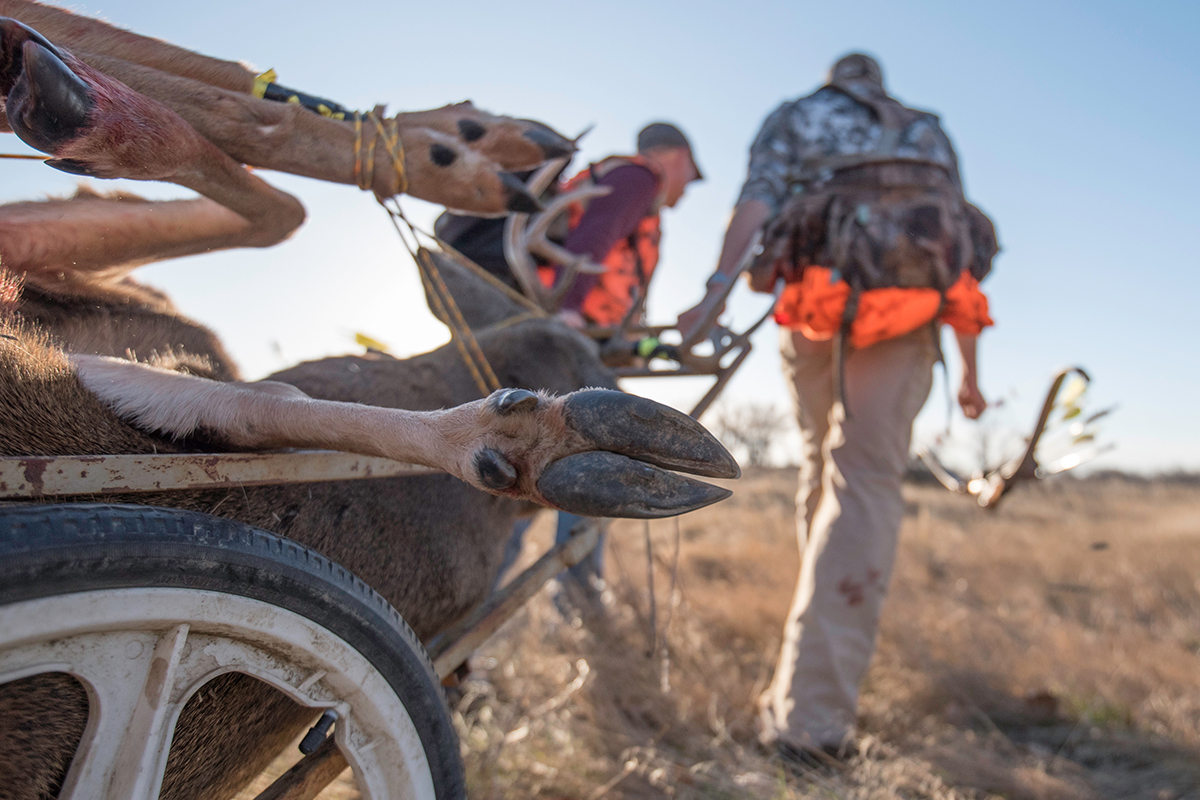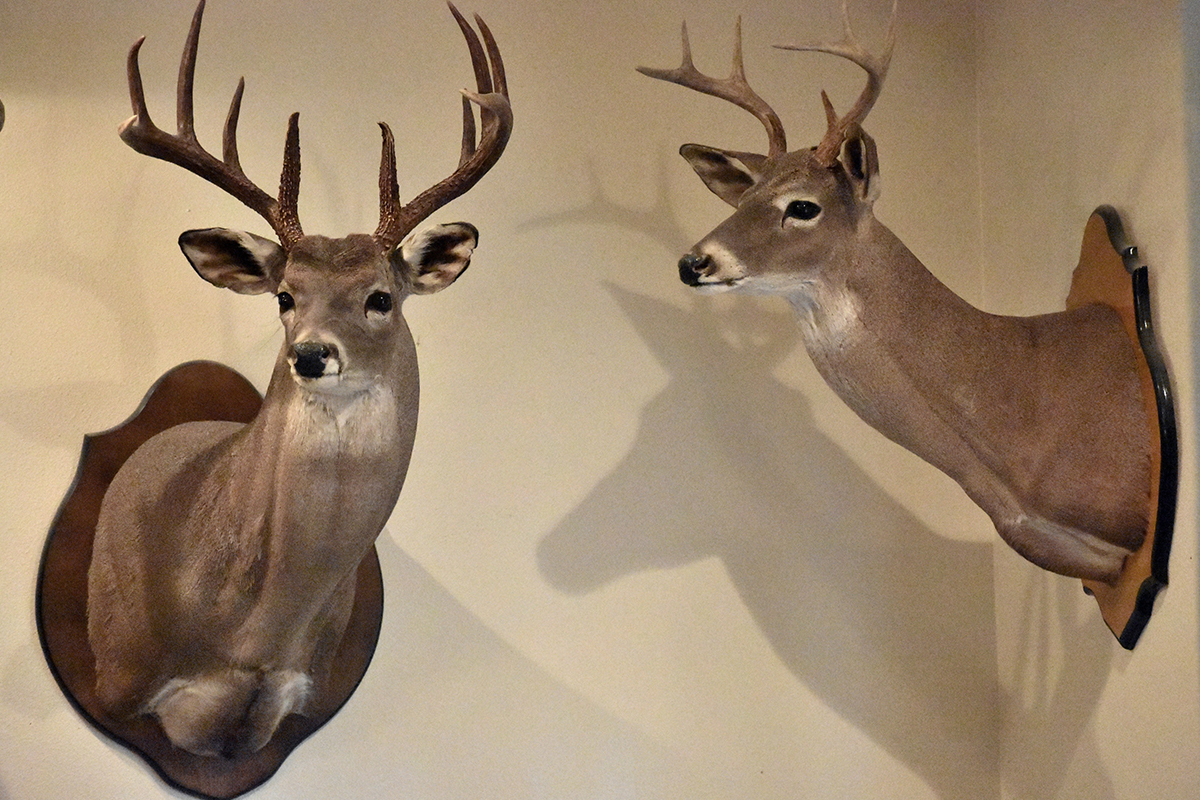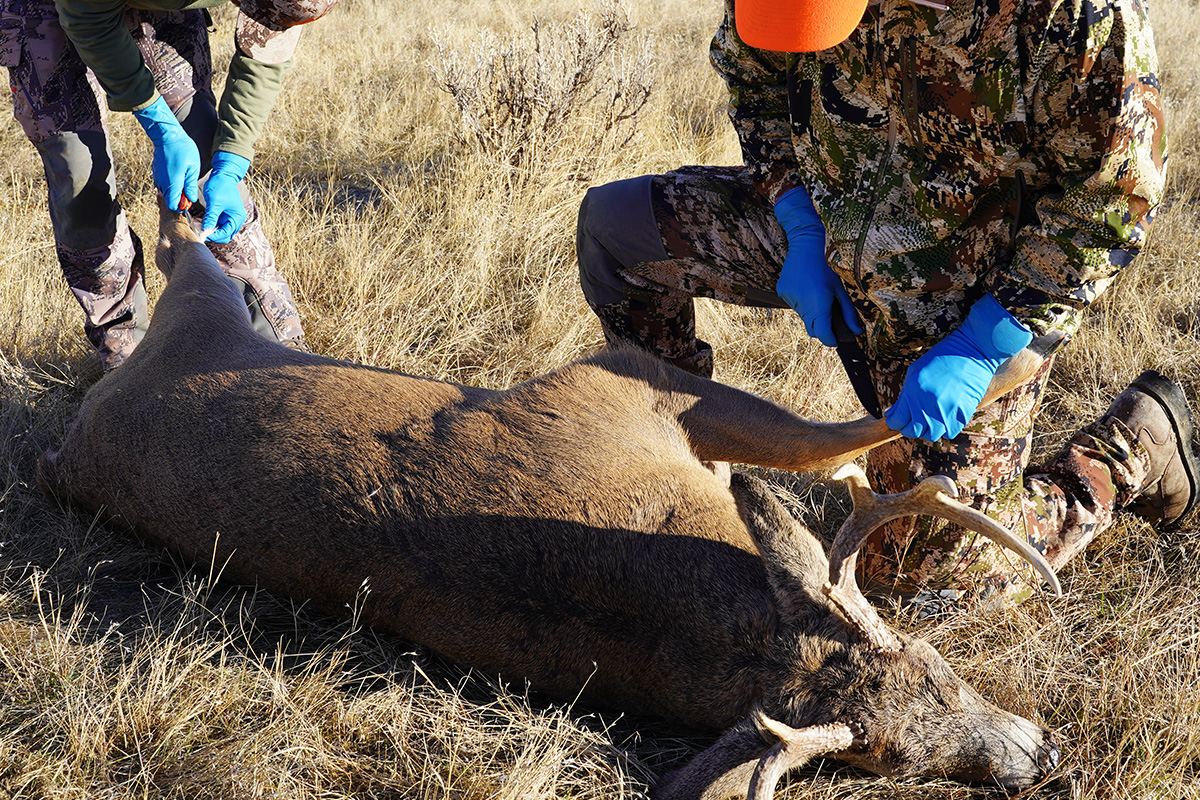
Caring for Your Mount
The Dos
• When transporting the animal, make sure it is as clean and dry as possible, so the taxidermist has an idea of what the final result should look like.
Skin the animal and get it to a freezer or a taxidermist as soon as you can, without cutting the skin too short (stop well behind the front legs or leave the skin attached).
• Make all cuts from underneath the skin, or from the inside out, to preserve the hair and look of the animal.
• Clean excess blood from the animal’s hair or feathers, preferably before the specimen dries.
• If you’re not familiar with preparing an animal, have someone show you how before you bring it to a taxidermist.
The Don’ts
• Don’t cut the animal’s throat for bleeding or any other purpose, or hang the animal by its neck. A taxidermist cannot fix the damage this would cause. The process of taxidermy is to preserve the carcass as best as possible.
• Don’t leave a cape (hide) in the open where it could be run over or drag a deer or any animal by its hind legs, which can cause damage due to friction with the ground.
• Don’t salt the hide. Although salt can prevent bacterial growth, it can dry out the cape and make it hard to flesh the animal. Instead, freeze it in a semi-airtight bag.
• Don’t allow the cape to touch water or ice; also, make sure skin and hair don’t touch when it’s frozen. All wrinkles should be flattened out before storage.
• Don’t ride the cape on a game rack above an exhaust or leave it lying in the dirt; even if storing it in a freezer, double wrap the cape in garbage bags.
continue reading


